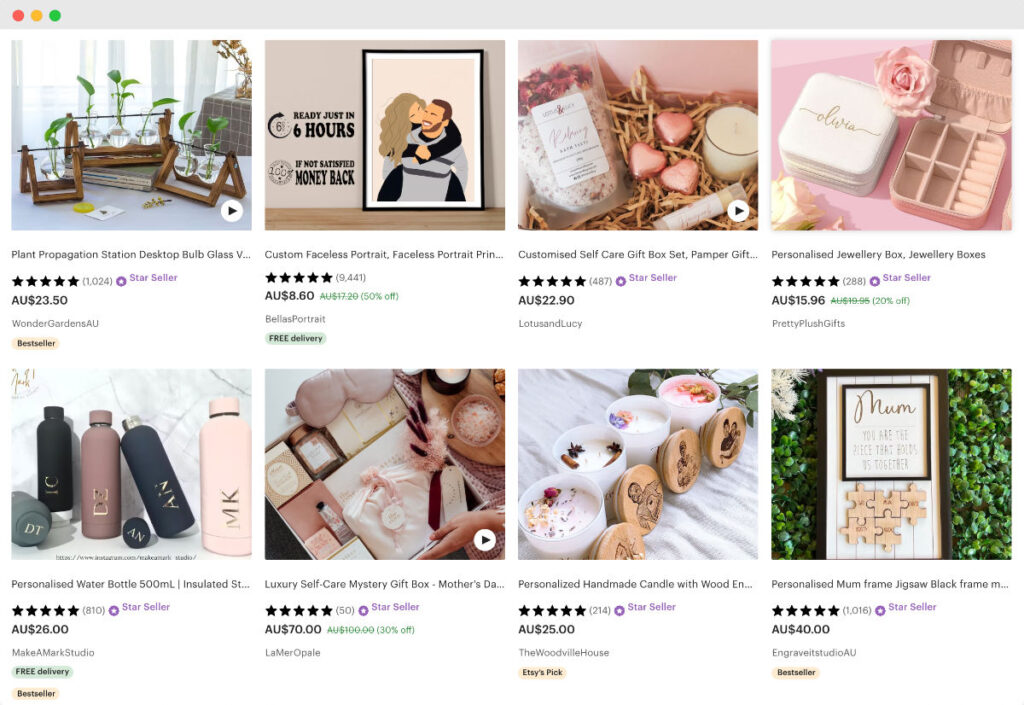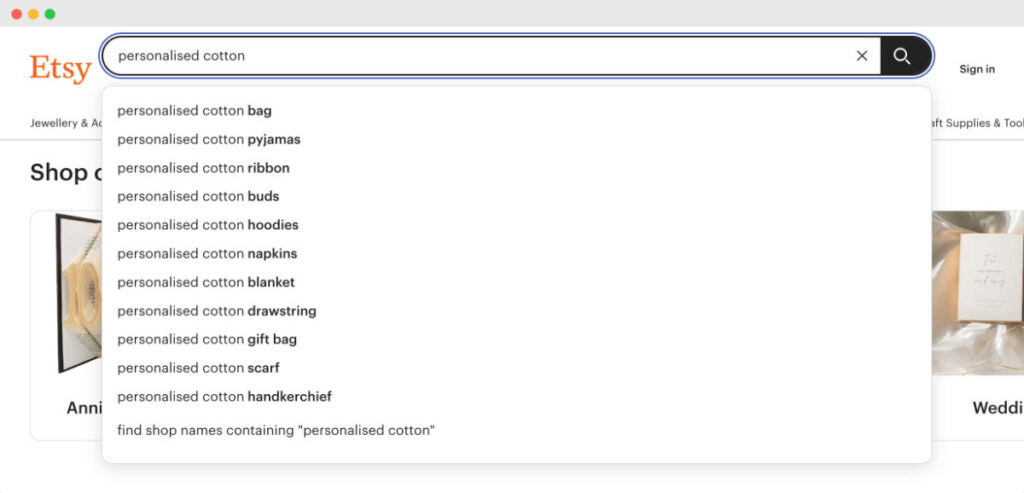Are you an Etsy seller looking to increase your online visibility and attract more customers? Well, the good news is that you’re not alone. Many sellers face the challenge of standing out in a sea of competition on Etsy. But fear not, for in this article, we will explore some effective strategies to help you find low-competition keywords and optimize your shop for better visibility. By the end of this article, you’ll be equipped with the knowledge and tools to navigate the world of Etsy SEO and gain an edge over your competitors. So let’s dive right in and discover how to find low-competition on Etsy!
Etsy SEO Strategy
If you’re an Etsy seller looking to improve your shop’s visibility and increase your chances of success, implementing a strong SEO (Search Engine Optimization) strategy is crucial. SEO can help improve your shop’s ranking in Etsy’s search results and drive more organic traffic to your listings. In this article, we will guide you through the importance of SEO on Etsy, how to optimize your shop for SEO, tips for choosing relevant keywords, utilizing Etsy’s search analytics, finding low competition keywords, shop optimization, utilizing Etsy analytics, researching trending and seasonal items, competitor analysis, utilizing social media for research, getting customer feedback, connecting with Etsy communities, and continuous research and adaptation.

Importance of SEO on Etsy
SEO plays a significant role in the success of Etsy shops. With over 81 million active buyers on Etsy, it’s vital to position your listings in front of the right audience. By implementing effective SEO techniques, you can ensure that your shop appears in relevant search results, increasing the likelihood of potential customers finding and purchasing your products.
When you optimize your shop for SEO, you increase your chances of appearing higher in Etsy’s search results. This is important because most buyers on Etsy tend to click on the listings displayed on the first page. By optimizing your shop and listings, you can increase visibility and drive more organic traffic to your products.
How to Optimize Your Etsy Shop for SEO
-
Optimizing Your Shop Title: Your shop title is one of the most critical elements for SEO on Etsy. It’s the first thing buyers see when they search for products, so make sure to include relevant keywords that accurately describe your shop and products. Remember to keep it concise and compelling.
-
Crafting Compelling Product Descriptions: Writing engaging and informative product descriptions is essential for both buyers and search engines. Make sure to include relevant keywords naturally throughout your descriptions. Focus on highlighting the unique features and benefits of your products while providing accurate and detailed information.
-
Utilizing Tags Effectively: Tags are essential for Etsy SEO as they help match your products to relevant search queries. Use all available tag slots and include a mix of broad and specific keywords that accurately describe your products. Keep track of trending tags and adjust them periodically to stay relevant.
-
Optimizing Product Images: Quality product images are crucial for conversions, but did you know they can also impact your SEO? Ensure that your images are visually appealing and correctly represent your products. Use descriptive filenames and alt tags with relevant keywords to improve visibility in search results.
-
Encouraging Customer Reviews: Positive customer reviews not only build trust and credibility but also impact your shop’s search ranking. Encourage customers to leave reviews by providing excellent customer service and delivering high-quality products. Ask satisfied customers to leave honest feedback, as it can significantly improve your shop’s organic visibility.
Tips for Choosing Relevant Keywords
Choosing the right keywords is the foundation of a successful Etsy SEO strategy. Here are some tips to help you select relevant keywords that improve your shop’s visibility:
-
Brainstorm Relevant Keywords: Start by brainstorming a list of keywords that are relevant to your products. Think about what potential buyers might search for when looking for items like yours. Consider color, size, style, and any unique features that set your products apart.
-
Utilize Keyword Research Tools: Take advantage of keyword research tools like Google Keyword Planner, Etsy’s own search bar, and third-party sites like Marmalead. These tools can provide valuable insight into search volume, competition, and related keywords that can help you make more informed decisions.
-
Identify Long-Tail Keywords: Long-tail keywords are longer and more specific phrases that typically have lower search volume but are less competitive. While they may receive fewer searches, they can be highly targeted, attracting the right audience and increasing the chances of conversion. Look for long-tail keywords that accurately describe your products.
-
Analyze Competitor Keywords: Analyzing your competitors’ listings can provide valuable insights into which keywords they are targeting. By understanding the keywords your competitors are ranking for, you can optimize your own listings and find opportunities to differentiate yourself in the market.
Utilizing Etsy’s Search Analytics
Etsy provides sellers with valuable search analytics that can help optimize their listings and improve overall shop performance. By utilizing Etsy’s search analytics, you can gain valuable insights into your shop’s visibility, customer behavior, and keyword performance. Here’s how you can leverage Etsy’s search analytics to enhance your SEO strategy:
-
Understanding Etsy’s Analytics Dashboard: Familiarize yourself with Etsy’s analytics dashboard, where you can access valuable data on your shop’s performance. Explore the various metrics available, such as views, visits, and favorites, to gain a deeper understanding of your shop’s strengths and areas for improvement.
-
Identifying Low-Competition Niches and Categories: Use Etsy’s search analytics to identify low-competition niches and categories that align with your products. Look for keywords or phrases with high search volume but relatively low competition. By targeting these niches, you can increase your chances of ranking higher and attracting more organic traffic.
-
Analyzing Search Terms and Trends: Etsy’s search analytics allow you to delve into the search terms buyers are using to find your products. Identify which search terms drive the most traffic and conversions. Analyze the trends in these search terms to adapt your listing titles, tags, and descriptions to optimize your SEO strategy continuously.
-
Evaluating Shop Performance Metrics: Etsy’s search analytics provide valuable data on your shop’s performance, such as click-through rates, conversion rates, and revenue. Evaluate these metrics regularly to identify patterns and trends. By understanding your shop’s performance, you can adapt and refine your SEO strategy for greater success.

Finding Low Competition Keywords
Understanding keyword competition is paramount when looking for low competition keywords on Etsy. By identifying keywords with lower competition, you can increase your chances of ranking higher in search results and attract more potential buyers. Here are some strategies to help you find low competition keywords:
-
Using Keyword Research Tools: As previously mentioned, keyword research tools like Google Keyword Planner and Marmalead can provide valuable insights into keyword competition. These tools often present a competition metric that indicates how difficult it is to rank for a particular keyword. Aim for keywords with lower competition scores.
-
Analyzing Competitor Keywords: Another effective strategy is to analyze your competitors’ listings and identify keywords they are targeting. Look for patterns and see if there are any gaps in their keyword strategies. By finding keywords your competitors may have overlooked or missed, you can gain a competitive advantage and attract buyers searching for those terms.
-
Identifying Long-Tail Keywords: Long-tail keywords are often less competitive than broad or generic keywords. Explore long-tail keywords related to your products and niche. These more specific phrases can help target a smaller, more focused audience, increasing the chances of attracting buyers who are actively looking for what you offer.
-
Regular Monitoring and Adaptation: Keyword competition can change over time, so it’s crucial to continually monitor and adapt your keyword strategy. Keep track of your keywords’ performance, experiment with new ones, and adjust your strategy based on trends and changes in the market. Regularly optimizing your keywords can help you maintain a competitive edge.
Shop Optimization
Optimizing your Etsy shop goes beyond just SEO. It involves creating a compelling and cohesive brand experience for potential buyers. Here are some key areas to focus on when optimizing your shop:
-
Optimizing Your Shop Title: As previously mentioned, your shop title should be concise, yet descriptive. It should accurately represent your brand and the types of products you offer. Incorporate relevant keywords naturally within your shop title to improve your chances of appearing in search results.
-
Crafting Compelling Product Descriptions: Product descriptions should provide detailed information about your products while showcasing their unique features and benefits. Use persuasive language to captivate potential buyers and emphasize how your products can enhance their lives or solve a problem they are facing. Incorporate relevant keywords in a natural and appealing way.
-
Utilizing Tags Effectively: Tags play an essential role in Etsy SEO but can also help potential buyers navigate and discover your products within the marketplace. Use all available tag slots and include a mix of broad and specific keywords. Remember to update your tags regularly to stay relevant and take advantage of trending terms.
-
Optimizing Product Images: High-quality and visually appealing product images can significantly impact buyer engagement and conversions. Make sure to capture your products from different angles and show their unique features. Optimize your images by using descriptive filenames and alt tags that include relevant keywords. This can help improve your shop’s visibility in search results and attract more potential buyers.
-
Encouraging Customer Reviews: Customer reviews play a vital role in building trust and credibility for your shop. Positive reviews can also contribute to improved search ranking. Encourage customers to leave reviews by providing excellent customer service, following up on their purchases, and delighting them with the quality of your products. Make it easy for customers to leave reviews by including a clear call-to-action in your packaging or sending a follow-up email.

Utilizing Etsy Analytics
Etsy provides sellers with a robust analytics dashboard that offers valuable insights into their shop’s performance. Understanding and utilizing these analytics can help you make data-driven decisions to improve your shop’s visibility and increase sales. Here are key ways to leverage Etsy Analytics:
-
Understanding Etsy’s Analytics Dashboard: Familiarize yourself with the different metrics available in Etsy’s analytics dashboard. These metrics include visits, orders, conversion rates, revenue, and more. Each metric provides valuable information about your shop’s performance and can help you identify areas for improvement.
-
Identifying Top Performing Products: Use Etsy Analytics to identify your top-performing products. Analyze the metrics associated with these products, such as views, favorites, and conversion rates. Understanding what drives the success of your best-selling products can help you replicate that success in your other listings.
-
Analyzing Search Terms and Trends: Etsy Analytics allows you to track the search terms buyers are using to find your products. Monitor the performance of these search terms and identify trends. Are there any emerging keywords or seasonal trends that you can tap into? Adapting your listings and SEO strategy based on these trends can help improve your shop’s visibility and attract more buyers.
-
Evaluating Shop Performance: Regularly review and evaluate your shop’s performance metrics through Etsy Analytics. Take note of changes over time and identify any patterns or trends. Are there any seasonal fluctuations? How do your metrics compare to previous months or years? By assessing your shop’s performance, you can make data-driven decisions and adapt your strategy accordingly.
Researching Trending and Seasonal Items
Keeping an eye on trending and seasonal items can give you an edge in the competitive Etsy marketplace. By capitalizing on emerging trends and seasonal opportunities, you can attract more buyers and increase sales. Here are some strategies to help you research trending and seasonal items:
-
Monitoring Etsy’s Trending Items and Categories: Etsy provides a “Trending” section on its website, showcasing popular items among buyers. Regularly monitor this section to stay updated on the latest trends and popular themes. By incorporating trending elements into your listings and products, you can increase your chances of attracting buyers actively looking for those items.
-
Identifying Seasonal and Holiday Opportunities: Seasonal and holiday opportunities present a chance to tap into buyer demand during specific times of the year. Research and understand the seasonal trends and holidays relevant to your niche. Create themed listings and product bundles that align with these occasions. By optimizing your listings for specific seasons and holidays, you can attract buyers looking to celebrate or commemorate those events.
-
Exploring Emerging Trends: Beyond Etsy’s trending section, stay updated on emerging trends within your niche and the wider market. Explore social media platforms, industry publications, and relevant blogs to identify new and emerging trends. By being ahead of the curve, you can position your shop as a trendsetter and attract buyers looking for unique and innovative products.

Competitor Analysis
Analyzing your top competitors on Etsy can provide valuable insights into their strategies and uncover opportunities for your own shop. Here are some steps to conduct a thorough competitor analysis:
-
Identifying Top Competitors on Etsy: Begin by identifying your top competitors on Etsy. These are the shops that consistently rank well and offer products similar to yours. Take note of their shop names and review their product listings for further analysis.
-
Analyzing Their Product Listings and Keywords: Dive into your competitors’ product listings and analyze their use of keywords. What keywords are they targeting in their titles, tags, and product descriptions? Look for patterns and common themes. Are their listings optimized for SEO, or do you notice any gaps that you can capitalize on?
-
Comparing Pricing Strategies: Pricing plays a crucial role in sales and competition. Assess your competitors’ pricing strategies and compare them to your own. Are they offering similar products at a lower price? Or are they positioning themselves as a premium brand? By understanding your competitors’ pricing strategies, you can adjust your own pricing to stay competitive while maintaining profitability.
-
Identifying Gaps in the Market: As you analyze your competitors, look for gaps in the market that you can exploit. Are there specific product types or variations that your competitors are missing? Can you offer unique customization options or alternative materials? By identifying gaps in the market, you can position your shop as a go-to destination for buyers looking for specific products or features.
Utilizing Social Media for Research
Social media platforms can provide valuable insights into product trends, popular products, and customer preferences. Leveraging social media for research can help you understand what buyers are looking for, gain inspiration, and identify potential competitors. Here’s how you can use social media for research:
-
Using Social Media to Identify Popular Products: Follow relevant hashtags and accounts within your niche on social media platforms like Instagram, Facebook, and Pinterest. Pay attention to posts that gain high engagement and identify products or trends that resonate with the audience. Incorporate these popular products or trends into your own shop.
-
Analyzing Hashtags and Trends: Engage in hashtag research to identify trending and relevant hashtags within your niche. This can help you discover popular topics and capture the attention of potential buyers. Look for patterns and understand what specific hashtags are resonating with your target audience.
-
Engaging with Potential Customers and Competitors: Interacting with potential customers and competitors on social media can provide valuable insights. Engage in conversations, reply to comments, and participate in relevant groups or forums. Pay attention to what buyers are looking for, the challenges they face, and the feedback they provide. These insights can help you refine your products and improve your SEO strategy.

Getting Customer Feedback
Customer feedback is an invaluable resource for improving your shop and products. By encouraging customers to leave reviews and obtaining feedback, you gain insights into their preferences and pain points. Here are some strategies to gather customer feedback:
-
Encouraging Customers to Leave Reviews: Provide exceptional customer service and ask satisfied customers to leave reviews. A timely follow-up email or a note in your packaging can prompt customers to share their experiences. Highlight the importance of reviews for your shop and the value they bring to future buyers. Offer incentives like discounts or freebies for leaving a review to encourage participation.
-
Utilizing Surveys and Feedback Forms: Incorporate surveys or feedback forms into your post-purchase process. Ask targeted questions about the shopping experience, product satisfaction, and any areas for improvement. Keep your surveys short and straightforward to maximize response rates. Consider offering a small incentive or discount for completing the survey as a token of appreciation.
-
Identifying Customer Pain Points and Preferences: Analyze the feedback you receive to identify common pain points and areas for improvement. Look for patterns in the feedback and prioritize changes based on the impact they can have on customer satisfaction. Also, pay attention to positive feedback and identify what your customers love most about your products and shop. These insights can help you refine your offerings and improve your SEO strategy.
Connecting with Etsy Communities
Connecting with fellow Etsy sellers through forums and communities can provide valuable insights, support, and networking opportunities. Here’s how you can connect with Etsy communities:
-
Joining Etsy Forums and Communities: Etsy offers various forums and online communities where sellers can connect, share ideas, and ask questions. Participate actively in these communities to network with fellow sellers, gain insights, and learn from their experiences. Share your knowledge and contribute to the community to establish yourself as a reliable and respected member.
-
Engaging with Fellow Sellers: Interact with other sellers by commenting on their posts, sharing advice, and offering support. Engage in discussions and exchange insights on topics related to shop optimization, SEO strategies, and marketing techniques. Collaboration and knowledge sharing within Etsy communities can help you stay updated with the latest trends and best practices.
-
Networking and Gaining Insights: Etsy communities provide an excellent opportunity to network with like-minded sellers. Connect with sellers operating in similar niches or with complementary products. Share tips and tricks, exchange strategies, and gain insights from sellers who have already achieved success on Etsy. Networking can help you grow your business, expand your reach, and refine your SEO strategy.
Continuous Research and Adaptation
Etsy’s algorithm is constantly evolving, and market trends change over time. To stay competitive and optimize your shop for maximum visibility, it’s crucial to engage in continuous research and adapt your strategy accordingly. Here’s what you can do to stay ahead:
-
Staying Updated with Etsy’s Algorithm Changes: Keep a close eye on Etsy’s announcements, blog posts, and help center to stay updated with any changes to the platform’s algorithm. These updates may impact how your listings are ranked and displayed. Stay informed to ensure your SEO strategy aligns with Etsy’s guidelines and recommendations.
-
Regularly Analyzing Keyword Performance: Continuously monitor the performance of your chosen keywords. Identify which keywords bring the most traffic and conversions and experiment with new keywords regularly. This allows you to adapt your SEO strategy based on data and focus on keywords that generate the best results.
-
Adapting Your Shop Strategy Based on Trends: Stay current with market trends by regularly researching emerging styles, themes, and buyer preferences. Incorporate these trends into your product offerings and SEO strategy to align with customer demand. By adapting your shop strategy based on trends, you can ensure your products remain relevant and attract a steady stream of potential buyers.
In conclusion, implementing a robust SEO strategy on Etsy is vital to maximize your shop’s visibility and increase your chances of success. By optimizing your shop, choosing relevant keywords, utilizing Etsy’s search analytics, researching trending items and seasonal opportunities, analyzing competitors, leveraging social media, gathering customer feedback, connecting with Etsy communities, and continuously adapting, you can enhance your shop’s SEO and drive more organic traffic to your listings. Stay informed, experiment, and refine your strategy to stay ahead in the competitive Etsy marketplace.



